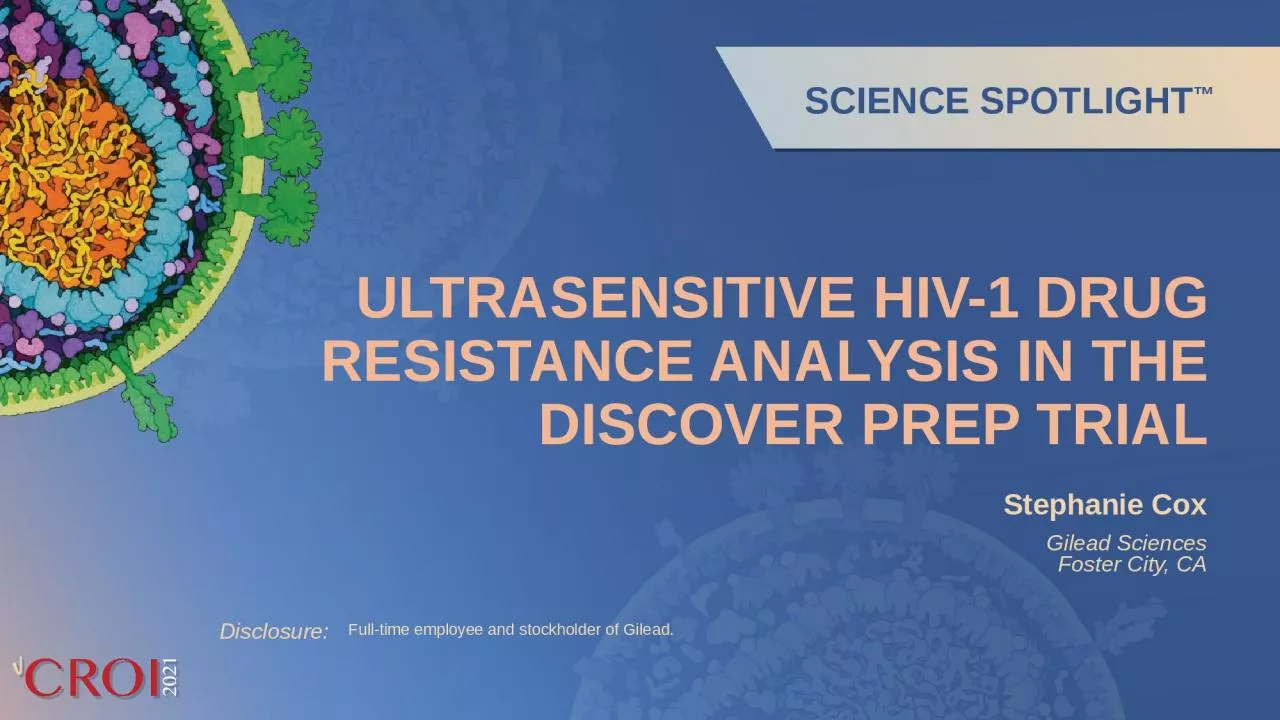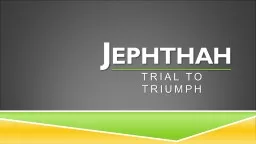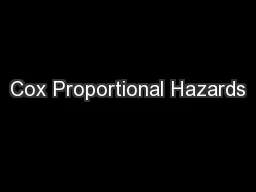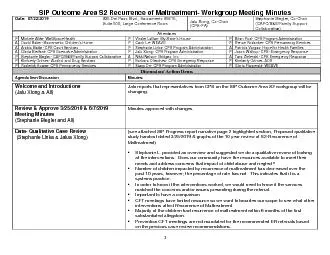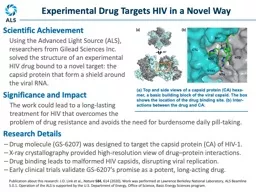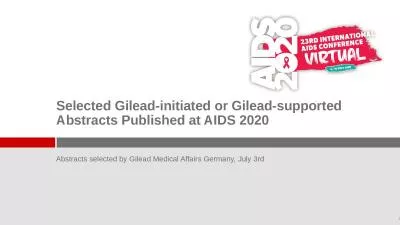PPT-Stephanie Cox Gilead Sciences
Author : emery | Published Date : 2024-01-29
Foster City CA ULTRASENSITIVE HIV1 DRUG RESISTANCE ANALYSIS IN THE DISCOVER PREP TRIAL Fulltime employee and stockholder of Gilead Randomized 11 Double blinded active
Presentation Embed Code
Download Presentation
Download Presentation The PPT/PDF document "Stephanie Cox Gilead Sciences" is the property of its rightful owner. Permission is granted to download and print the materials on this website for personal, non-commercial use only, and to display it on your personal computer provided you do not modify the materials and that you retain all copyright notices contained in the materials. By downloading content from our website, you accept the terms of this agreement.
Stephanie Cox Gilead Sciences: Transcript
Download Rules Of Document
"Stephanie Cox Gilead Sciences"The content belongs to its owner. You may download and print it for personal use, without modification, and keep all copyright notices. By downloading, you agree to these terms.
Related Documents

